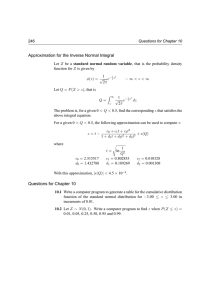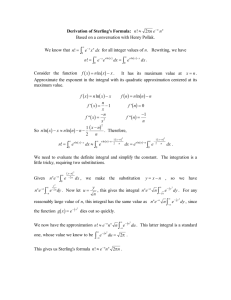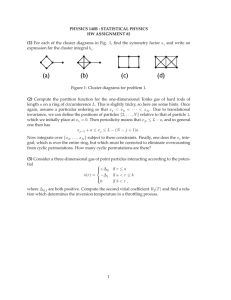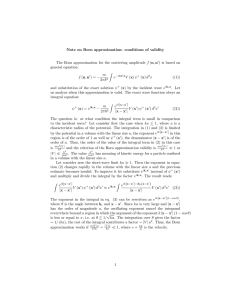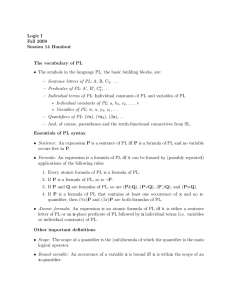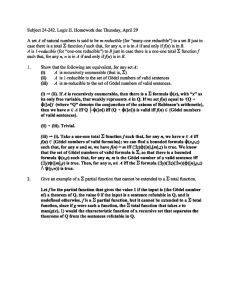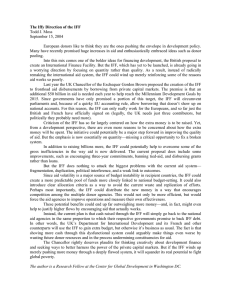Spring 2007 Pure Math Qualifying Exam, Part 1. 2 1 0
advertisement
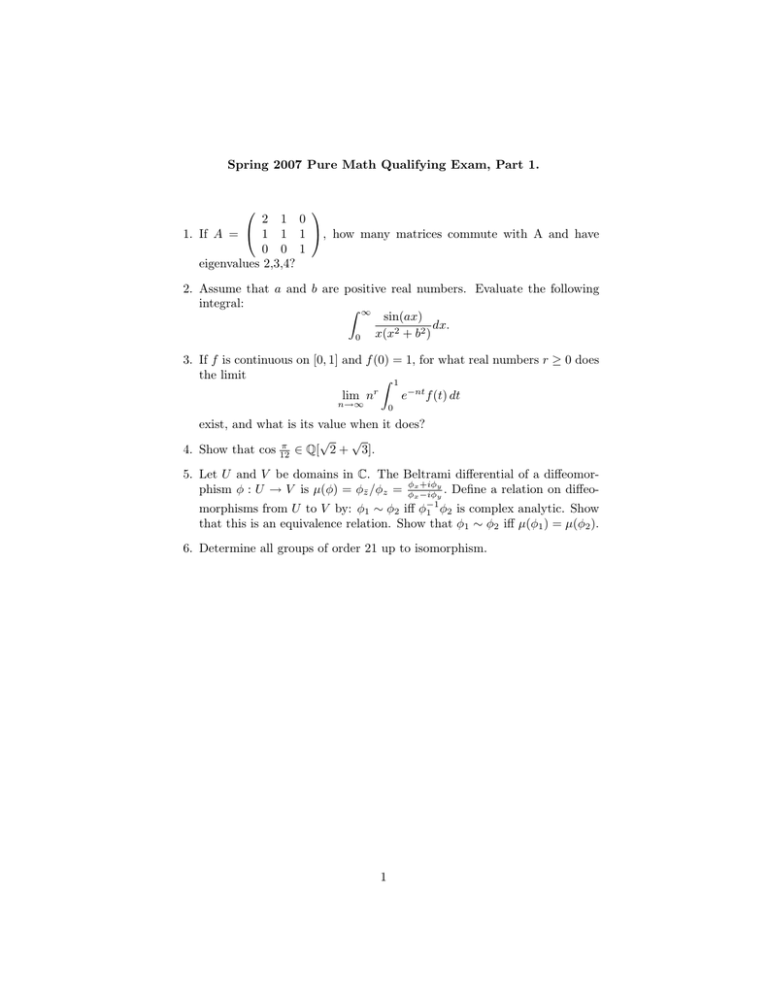
Spring 2007 Pure Math Qualifying Exam, Part 1. 2 1 0 1. If A = 1 1 1 , how many matrices commute with A and have 0 0 1 eigenvalues 2,3,4? 2. Assume that a and b are positive real numbers. Evaluate the following integral: % ∞ sin(ax) dx. x(x2 + b2 ) 0 3. If f is continuous on [0, 1] and f (0) = 1, for what real numbers r ≥ 0 does the limit % 1 lim nr n→∞ e−nt f (t) dt 0 exist, and what is its value when it does? √ √ π 4. Show that cos 12 ∈ Q[ 2 + 3]. 5. Let U and V be domains in C. The Beltrami differential of a diffeomorφ +iφ phism φ : U → V is µ(φ) = φz̄ /φz = φxx −iφyy . Define a relation on diffeo- morphisms from U to V by: φ1 ∼ φ2 iff φ−1 1 φ2 is complex analytic. Show that this is an equivalence relation. Show that φ1 ∼ φ2 iff µ(φ1 ) = µ(φ2 ). 6. Determine all groups of order 21 up to isomorphism. 1 Spring 2007 Pure Math Qualifying Exam, Part 2. 1. What is the radius of convergence of the power series for z = 1 + 4i? √ 2 − ez around 2. Find the maximum value of x(1 − x)(1 − y) 1 − xy in the domain (x, y) ∈ [0, 1]2 . Give the values of x, y where the maximum is achieved. √ 3. Prove Stirling’s approximation n! = nn e−n neO(1) . That is, show that n −n 1/2 the ratio of n! and n e n is bounded between two positive constants, for n big enough. (Hint: one way is to take logs of both sides and use an integral approximation for log n!). 4. Find all integers n such that x5 − nx − 1 is irreducible over Q. 5. Let G be the abelian group defined by generators x, y, and z, and relations 15x + 3y 3x + 7y + 4z 18x + 14y + 8z = = = 0 0 0. (a) Express G as a direct product of two cyclic groups. (b) Express G as a direct product of cyclic groups of prime power order. (c) How many elements of G have order 2? 6. Show that for each n = 1, 2, . . . there is a unique polynomial Pn (x) of degree n satisfying ! x+1 Pn (t)dt = xn x for all x. Compute P1 (x) and P2 (x). 1
